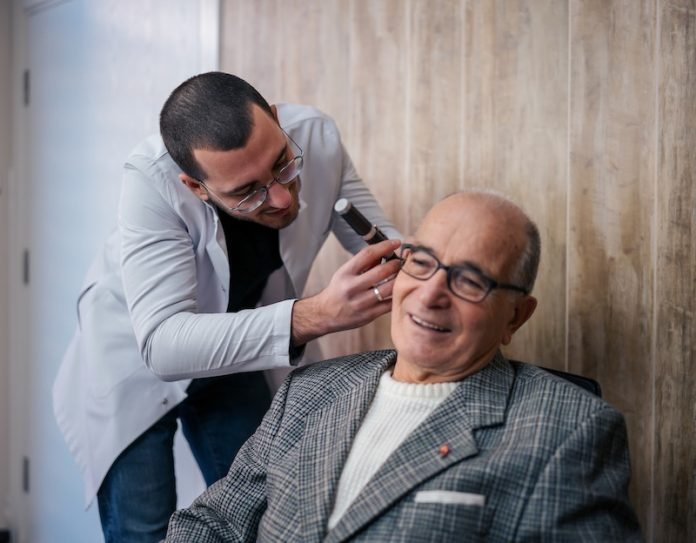
Imagine a noise that doesn’t stop. It could be a ringing, buzzing, or hissing sound. This is tinnitus, and for some, it is just a mild bother.
But for others, it’s a big problem. About 15 out of 100 adults in the US have tinnitus, and almost 40 out of 100 of those are looking for a way to make it stop.
A Beacon of Hope from the University of Michigan
Now, there’s good news! Scientists at the University of Michigan’s Kresge Hearing Research Institute might have found a way to help.
The person leading this work is Susan Shore. She is a well-known expert in the field of hearing studies.
An Interesting Study
Shore and her team carried out a detailed study. They published the results in JAMA Network Open, a respected medical journal. They wanted to understand and treat a certain kind of tinnitus called somatic tinnitus.
With this type, simple movements like clenching your jaw or pressing your forehead can change the loudness or pitch of the noise. About 70% of people with tinnitus have this kind.
The Participants and the Device
Shore and her team invited 99 people who had this condition to take part in their study.
To qualify, they had to have somatic tinnitus that was annoying to them. Their hearing also had to be normal or only slightly worse than normal.
The participants were given a special device made by a company called in2being, LLC. This device was designed to help each person deal with their own unique tinnitus noise.
It combined electrical stimulation with the tinnitus noise that the person usually hears. This is called a bi-sensory stimulus.
The Procedure
The people in the study were divided into two groups. The first group was given active treatment using the device first, while the second group was given a sound-only treatment, without the electrical part.
For six weeks, participants used their devices every day for 30 minutes. After that, they got a break for six weeks. Then, they switched treatments for another six weeks.
The Findings
Each week, the participants filled out questionnaires. They also had their tinnitus noise measured. When the participants used the active treatment with the device, they said that their quality of life improved.
The loudness of their tinnitus decreased, and they felt better overall. But, this was not the case when they were given the sound-only treatment.
Interestingly, more than 60 out of 100 participants reported a big drop in tinnitus noise after six weeks of active treatment.
This backs up the findings of an earlier study by the same team, which showed that the more active treatment they had, the less tinnitus noise they heard.
The Future
This study opens up a whole new possibility for treating tinnitus.
“We can give hope to millions of people with tinnitus,” says Shore. Auricle Inc., a company that has the exclusive rights to use the bi-sensory stimulation in their products, plans to make this treatment available to everyone.
With the support of Innovation Partnerships, a part of the University of Michigan, they are working on getting the necessary approvals to make this happen.
So, in the not-too-distant future, this irritating noise could be a thing of the past. For millions of people suffering from tinnitus, that is indeed a new hope!
If you care about health, please read studies about hearing loss linked to higher dementia risk, and scientists believe hearing loss could be reversed.
For more information on health, please see recent studies about Vitamin D deficiency linked to higher dementia risk, and these antioxidants could help reduce dementia risk.
The study was published in JAMA Network Open.
Copyright © 2023 Knowridge Science Report. All rights reserved.



